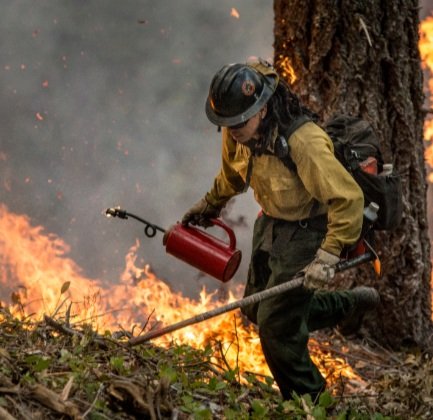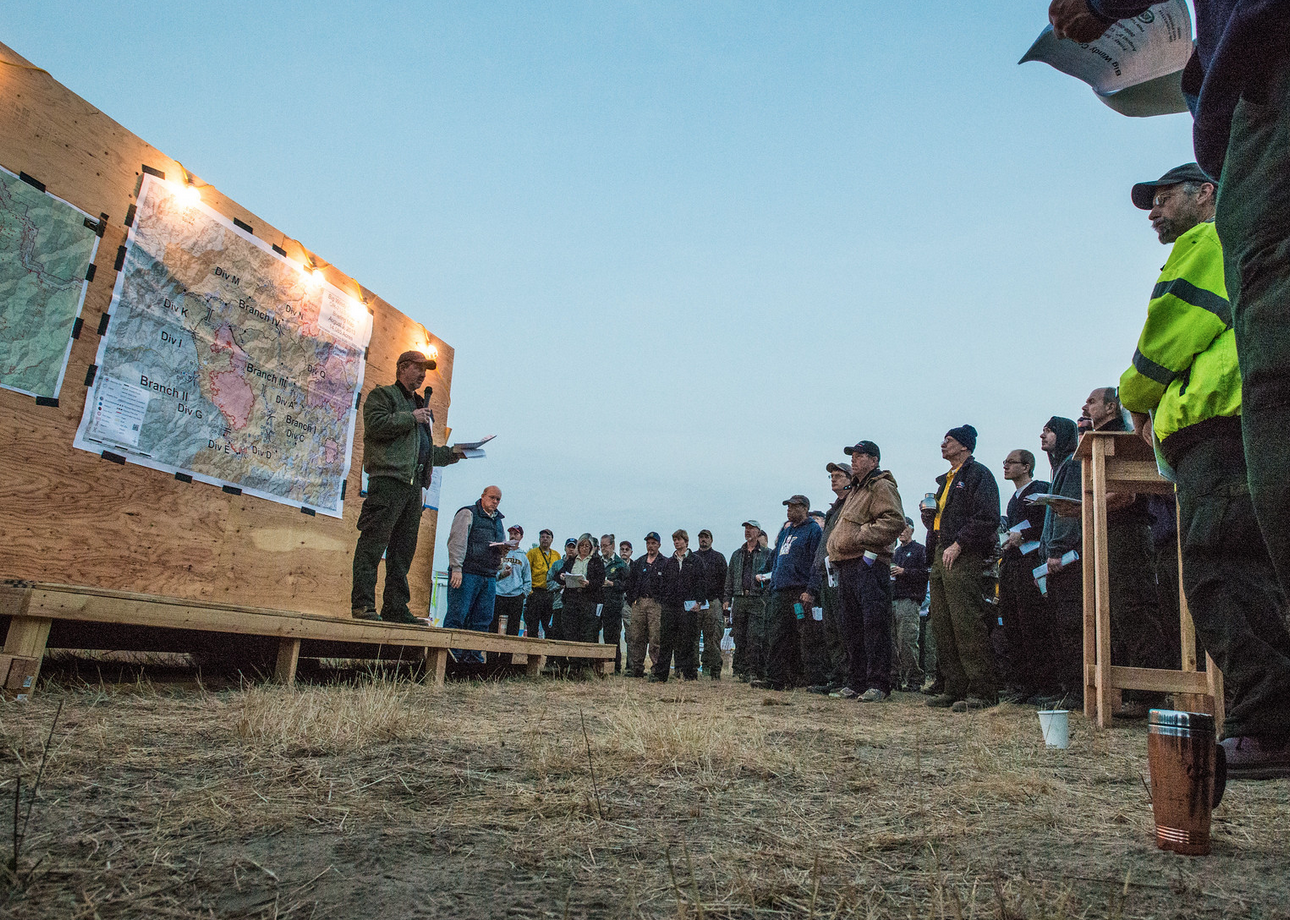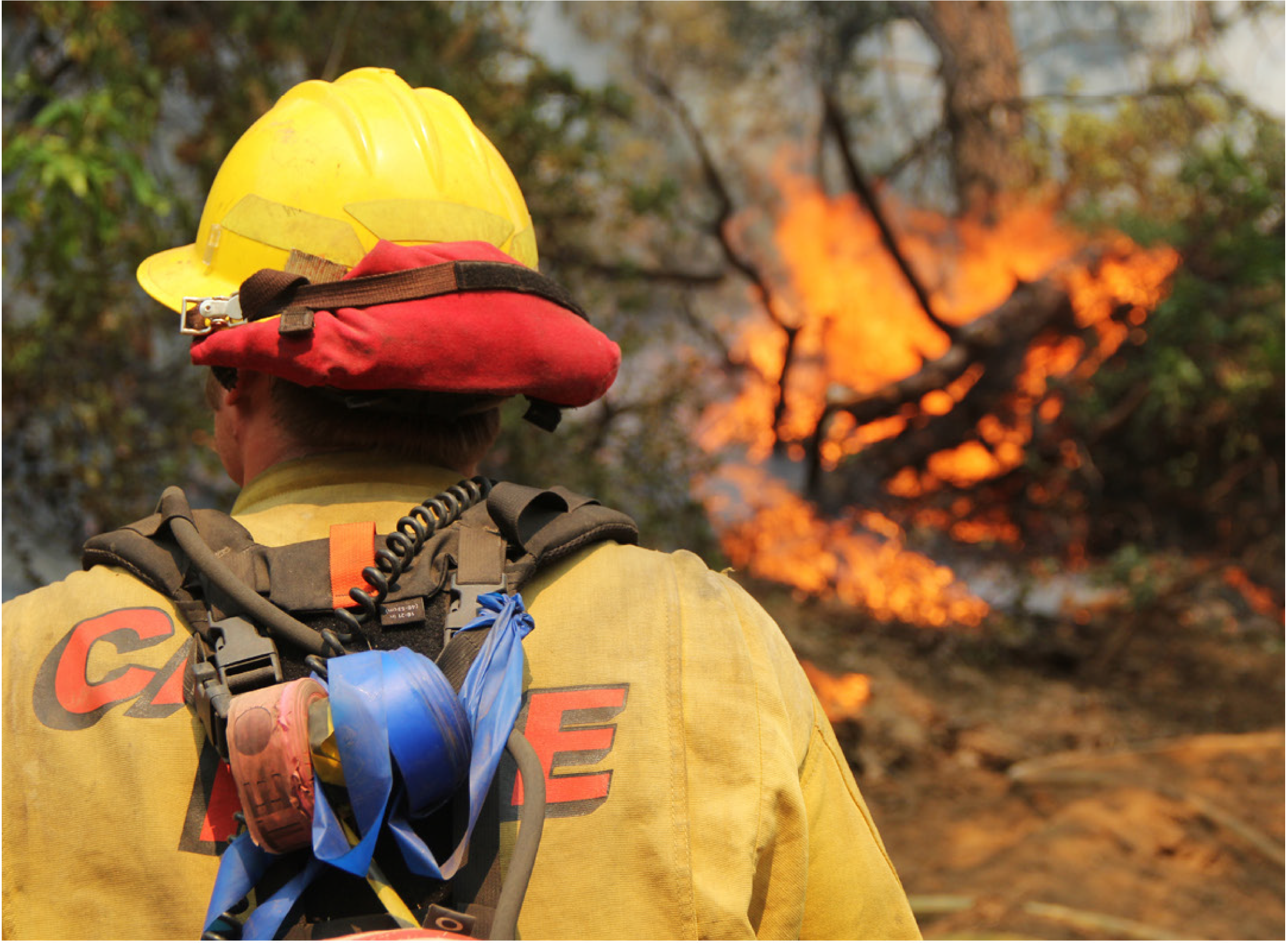
Chief Moore's New Direction on Prescribed Fire
In his 2023 Letter of Direction to USDA wildland firefighters, Chief Randy Moore made a significant change in tone and language when it comes to the use of prescribed fire.

Big Iron & Big Profit
As is in vogue today, business experts are allowed to pose as experts in any and all things. I caught this review of the new book, Running Out of Time: Wildfires and Our Imperiled Forests in Wildfire Today.

Jetstream
“While most of the United States is coming out of a wet winter, large fires are ravaging Alberta and British Columbia just north of Montana. Ninety large fires have burned a million acres in 2023, burning 150 times more area than fires in the last five years combined. While May is typical fire season in western Canada, fires are going to new extremes this year, burning

Indigenous Cultural Burning Crew Returns Good Fire to Oregons Willamette Valley
“As a thirty-plus year veteran of wildland firefighting and retired Fire Management Officer for one of California's eighteen National Forests, I have had the privilege of working with many incredible fire crews over the years. But I must say, the crew of young wildland firefighters I had the opportunity to work with this past fall was truly exceptional.

Biden’s “Burn Back Better”
“The United States has a vast area of public forest that needs to burn. Wildfires chip away at these hundreds of millions of acres of decadent forest every year. Still, nationally the area that needs to burn to restore wildlife habitat and protect towns is staggering. Finally, the Biden administration

Changing Fire's Story from a Source or Symptom of the Climate Crisis to One of its Solutions
“Since it was first sparked on land 420 million years ago, fire has played a major evolutionary role in ecosystems and human societies. Indigenous peoples used fire to nurture habitats for a wide diversity of species that provided them with foods, fibers, and medicines, and their cultural burning protected their villages from unwanted wildfires.

Question Suppression: Getting the Whole Story about Fire Suppression Operations
“Question Suppression: Getting the Whole Story about Fire Suppression Operations” is a tipsheet for reporters who cover wildfire designed to aid them in asking the hard questions. It offers advice and examples to uncover how the fire is actually being managed.

Caldor Fire Story Maps by Courtney Kaltenbach and Maxwell Spiegel
“I’ve never seen a retardant drop successfully contain fire spread and I often see areas of burned forests coated in powdery pink retardant that I know is going to seep into the soil and poison the areas watershed. Aggressive fire-suppression tactics are becoming more futile and more dangerous in the face of climate change. The impacts of the Caldor Fire on Lake Tahoe is an illuminating example of the harm of fire suppression.”
Check out the story map below to learn about the suppressive firefighting tactics used during the 2021 Caldor Fire and their impacts on Lake Tahoe and the surrounding area.

Fire as the Essential Tool: Remembering to Celebrate Success
Looking at the Washburn Fire, there have been dozens of iterations of prescribed burning, thinning, and pile burning around the Mariposa Grove of Giant Sequoias and the nearby community of Wawona. In addition, the park has since the 1970’s had a program of allowing some lightning caused fires to burn. Both the human community of homes and infrastructure that comprise Wawona and the natural community of giant sequoias have benefitted from a single program of work – return fire to the extent possible to fire-dependent and fire-adapted landscapes.

FUSEE welcomes new crew members
Thanks to generous donors and the shifting cultural fire attitude around fire, the FUSEE crew is growing! We have recently welcomed more torchbearers for the new fire paradigm - an Administrative Director and two summer interns.

We Owe the Forests Good Fire
People owe the forests and wildlife restoration. We owe the natural world the best of our knowledge to restore the land to a resilient state that will support the maximum populations of diverse plants and animals and give generations of people beautiful places to find solitude, beauty, knowledge, adventure, recreation and spiritual sustenance.

Safety is more than a 5-minute talk. Keep close contact with your community too.
Despite worsening drought, longer seasons, increasing job vacancies, and increasing fire behavior it always seemed that tragedy could never hit me or anyone close to me. We are too smart. Too tough. We pay attention. We know what we are doing. Well, turns out that there are a lot of things out of our control.

Wildfire Guidelines for Archaeologists (USFS)
This document briefly synthesizes some of the technical information available on the effects of fire on cultural resources. This synthesis should assist cultural resource specialists with their contributions to fire management planning, compliance for prescribed fire projects, and participation in wildland fire use or wildfire events.

Labor Day Fire Analysis
In September 2020, Oregon experienced the most extreme wildfire event in the state’s history. In a matter of days, the "Labor Day Fires" ripped across vast swaths of public and private forestland on the westside of Oregon’s Cascade Mountains—a region that rarely sees widespread fire activity. Thousands of homes were lost, numerous people died, and over 10% of Oregon’s population was placed on some level of evacuation notice. Now that the smoke has cleared, researchers from around the region have begun to study the event to draw lessons about wildfire behavior under extreme weather events. Our team initiated this research project in November 2020 to drill into the following question: How do fuel conditions (and associated forest practices) influence wildfire behavior during extreme weather events?

Good Fire: Current Barriers to the Expansion of Cultural Burning and Prescribed Fire in California and Recommended Solutions
In 2020, over four percent of California burned in wildfire. Over 30 people lost their lives in the fires; experts estimate an additional 3,000 premature deaths may have resulted from wildfire smoke. Property damage is expected to top $10 billion.

Leadership in Forest Management
Leadership. It's a simple word that can be as complex as an August lightning bust. Its principles are beaten into individuals and organizations, but they're only as useful as the person who cares enough to think about how to apply them.


FireWatch Part 4: A Guide to Online Wildfire Information Gathering of CalFire Incidents
Learn how to monitor CALFIRE suppression operations to document its costly and destructive firefighting actions on private and state lands.

Forest Wisdom Found At The Golf Course?
It was a little rich having Donald Trump and Mike Pence coming in from New York and Indiana to tell California’s governor and state scientists that they need to “manage forests” to confront unprecedented wildfire. For those of us deeply involved in fire and land management on federal lands in the West, their know-it-all scolding was laughable, condescending, ignorant and mildly insulting.

In Oregon’s 2020 fires, highly managed forests burned the most
This record-breaking fire season has re-ignited discussions about causes of severe fires. One long-standing narrative is that fire suppression has resulted in ‘overgrown’ forests that fuel larger and more intense fires than occur under more intense management (the “fuels narrative”). This narrative, promoted by timber interests and the president, among others, is irrelevant within the context of Oregon's major western Cascades fires.
